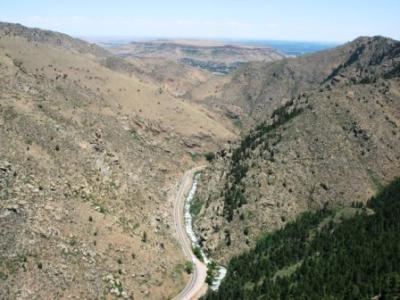- elevation 5,908 ft (1,801 m) - elevation 3,241 ft (988 m) Length 251 km | - average 16.7 cu ft/s (0 m/s) Basin area 4,514 km² | |
 | ||
- left North Fork Arikaree River - Black Wolf Creek | ||
The Arikaree River is a 156-mile-long (251 km) river in the central Great Plains of North America. A tributary of the Republican River, most of its length lies in the American state of Colorado. It is a designated areas within the Colorado Natural Areas Program to protect native and uncommon species that may be endangered or threatened.
Contents
- Map of Arikaree River Haigler NE USA
- NameEdit
- GeographyEdit
- HistoryEdit
- Arikaree River Natural AreaEdit
- References
Map of Arikaree River, Haigler, NE, USA
NameEdit
The river is named after the indigenous Arikara people. The word "Arikaree" refers to "horn".
GeographyEdit
The source of the Arikaree River is in extreme eastern Elbert County, Colorado on the western edge of the High Plains region of the Great Plains. From there, the river flows generally northeast across the High Plains in eastern Colorado. It then crosses the extreme northwestern corner of Kansas before entering far southwestern Nebraska. At the town of Haigler, the Arikaree joins with the North Fork Republican River to form the Republican River.
The point where the Arikaree River flows out of Yuma County, Colorado and into Cheyenne County, Kansas, located at 39°58′41″N 102°03′06″W, is the lowest point in Colorado at an elevation of 3,317 feet (1,011 m). It holds the distinction of being the highest low point of any U.S. state, higher than the highest points of 18 states and the District of Columbia.
HistoryEdit
Along the river is the site of the 1868 Battle of Beecher Island.
Arikaree River Natural AreaEdit
The Arikaree River has been made one of the designated areas under the Colorado Natural Areas Program because it is "part of the largest and best remaining example of a naturally functioning Great Plains river system in Colorado." It has several species of reptiles, fish, and amphibians that are native and uncommon. The area is a sanctuary for many bird species, including burrowing owls, ferruginous hawks, and greater prairie chickens. The habitat is near-pristine and there are high-quality riparian and native prairie plants.
